Even without big explosions or bright plumes of ejecta, for all intents and purposes it appears LCROSS’s impact on the Moon was a smashing success. While the mainstream media and the public seemed disappointed in the lack of visual data, mission managers said the mission has garnered plenty of spectroscopic data, and that’s where the real science can be found. “There was an impact and we saw the crater with spectroscopic data,” said LCROSS principal investigator Tony Colaprete. “We have the data we need to address the questions we set out to answer.” The big question is whether the impact kicked up any signatures of water ice, but it could take days, weeks or months to analyze all the data.
Initial video and images from the event – taken by LCROSS itself and a wide variety of space- and ground-based telescopes – did not show much as far as a visible impact or the anticipated ejecta plume.
Was that a surprise to the science team? “I guess I’m not necessarily surprised,” said Colaprete. “Impacting the Moon is tricky business, and you learn to expect what you’re not going to expect. I’m not convinced we haven’t seen the ejecta. I want to go back to images and look at them carefully. We’ve had just 15-20 minutes of our efforts so far with images. So stay tuned. I certainly hope we can dig something out that will be telling. Our emphasis was on the spectra, that’s where the information is.”
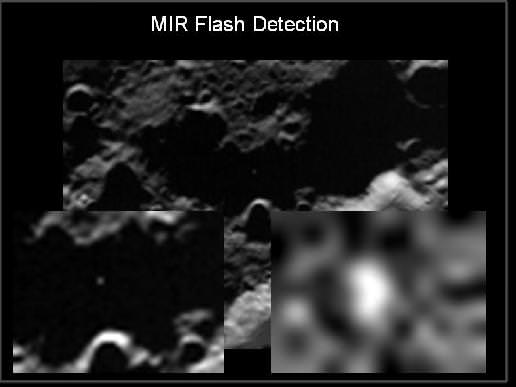
Just two and a half hours after impact, mission managers spent most of Friday morning’s press conference explaining how little chance they had to look at the data – and that they wouldn’t even approach the topic of whether water had been detected yet — and how the impact doesn’t end the mission. “This is just the beginning,” said Michael Wargo, NASA’s chief lunar scientist. “We’ve got an enormous amount of data, not only from LCROSS from assets around the world. This is going to change the way we look at the Moon scientifically and change the way we do future exploration.”
High praise was given to the operations and observation campaign teams, as well as the spacecraft itself. “I’m happy to report spacecraft performed beautifully and the operations team did very well,” said Dan Andrews, LCROSS Project Manager. “It takes awhile to comb through the data to make sure we are reporting accurate and correct data, but we wanted to give you all an update on how things went.”
Here’s what they know so far:
They saw a flash at impact with the near infrared camera on LCROSS, and were able to see that an impact occurred, and even see the crater itself. “We had a very good high signal to noise data on the LCROSS spectrometer, probably the highest we could hope for,” said Colaprete. “The fact that we saw a remnant crater and that we got data as far down as we did, it’s very promising. Just on my initial eyeballing, the crater looked to be about the size we were predicting; about 18-20 feet or more. It filled a whole pixel of the camera.”
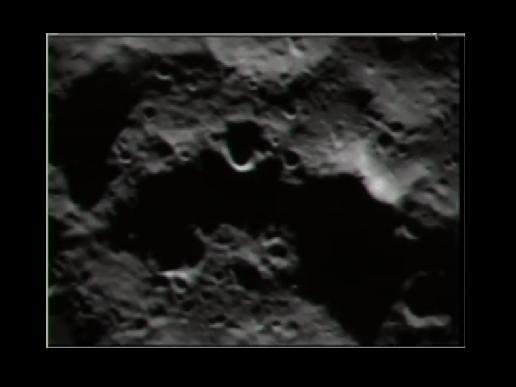
“The cameras worked very well and we were able to track the Centaur all the way to the end of the mission” Colaprete continued, and then addressed a possible reason why the ejecta plume wasn’t more visible. “There was a flicker from the Centaur that might have been from a tumbling action. We wanted to avoid a perfectly end-on or perfectly flat impact, and it’s possible that happened. But we have the information we can go back now and look at everything.”
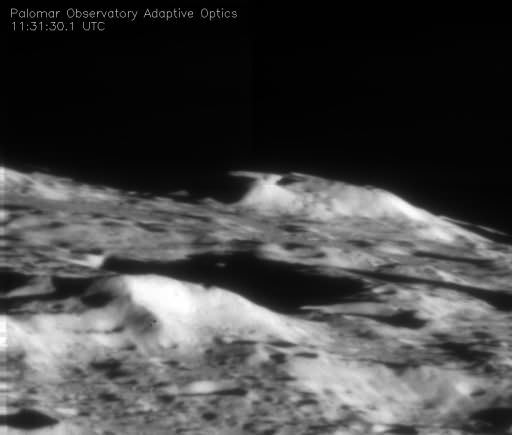
Data from several other spacecraft and telescopes were just starting to trickle in, as well.
On the Lunar Reconnaissance Orbiter, which was observing the impact event from lunar orbit, the LAMP instrument (UV spectrometer) and the Diviner instrument (imaging radiometer) confirmed detection of the ejecta plume. The LRO teams have begun analyzing their data.
The Hubble Space Telescope also observed the event, but not in visible light. “HST was highly focused on spectroscopy, which is where the science is,” Colaprete said. “HST cannot look at the moon except for the very narrow filters because it is so bright. It took long integration stares just off to the side of the Moon.”
Other assets observing the event included IKONOS, GeoEye 1, ODIN — a Swedish radio telescope – all in Earth orbit, and Keck Observatory on Mauna Kea, the Palomar Observatory and MMTO.
Jennifer Heldmann who led the LCROSS observation campaign described some of the data obtained by a all the different telescopes and spacecraft: “We have images, we have video, we have graphs with squiggly lines, which scientists love.”
One surprise is that in the initial data, sodium was seen in the spectroscopic data, and Colaprete said sodium exists in the Moon’s tenuous atmosphere called the exosphere, and perhaps something got thermalized during the impact excite the sodium atoms to where strong visible emission lines showed up in the data.
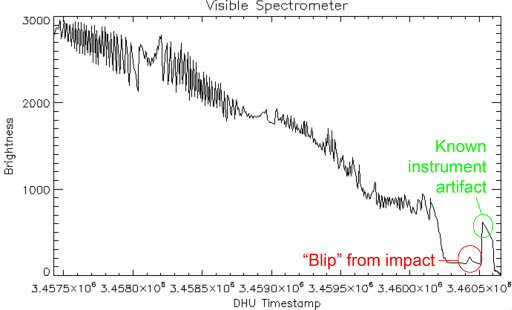
Other “blips” in the data showed up, and while Colaprete said he couldn’t say what they meant, he was just glad there were there.
“As of now, this has just been a real-time mission,” he said. “We laid it all out there by having streaming video, but here we are at 2 hours. Our primary objective was finding out about the hydrogen that’s been observed at the lunar poles, and honestly, our initial visual images didn’t answer that question. But the answers are in the spectra and we’ve got something there. It could be days, weeks, or months until we can give you an answer. We’ll look at data, scratch our heads, fight over who gets to look at which data, and hopefully from that we can make a public announcement of what we’ve found.”
Source: LCROSS press conference.

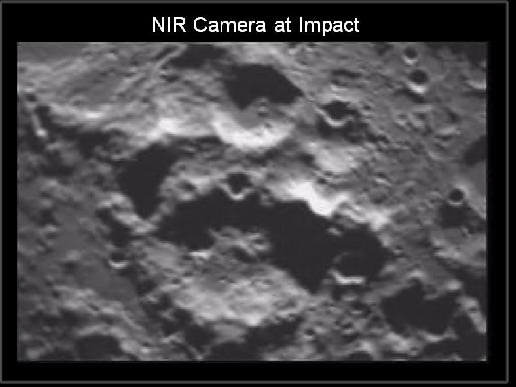
Can’t wait to see more ‘after’ images from the LRO!
Forget optical… Just before 4 am the wind around here died down, and even the crickets quited down (I wonder what THEY knew!) and I SWEAR I heard the impact.
Sound wont travel though space, its not like the movies. I dont think anyone heard it.
What about Baryonic Acoustic Oscillations then, hum? Sound can travel in space, but you are correct, no one can hear it:
Possibly one can make a case that concerted flows of gas in more rarefied volumes of space constitutes traveling waves which we also can hear in atmospheres as rarer forms of sounds (say, shock waves), but such molecular flow doesn’t behave like anything we normally think of.
Quite like dragons, in fact.
Um, and since I linked to an astronomer discussing scifi: the rest of that analysis is dead wrong. IIRC the Trek tech-speak excuse for suspension of disbelief, the sounds is what you hear as an observer _inside_ the pressurized ships or suits, as diverse ship fields pull and push your hull or fabric, or your sensor array translates observations into helpful sounds.
Which makes much more sense than imagining that the camera field of view represents an actual single objective observer anyway, in most _any_ movie.
If Anaconda offers an EU theory on Universe Today and no one reads it, does it make a point?
I’m sorry, this is AU (Acoustical Universe).
EU is two doors down at the end of the corridor, just on the other side of CS. (Common Sense)